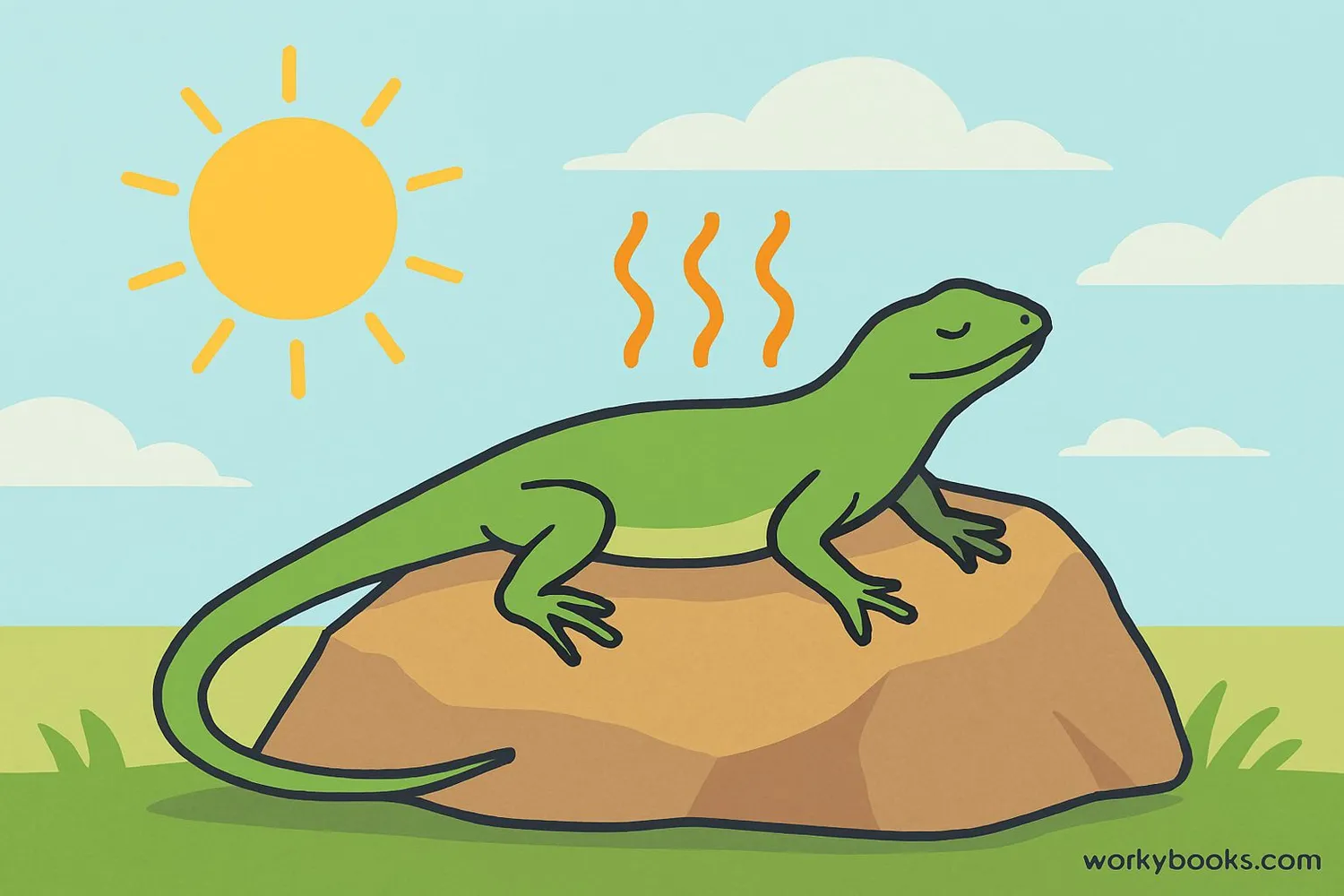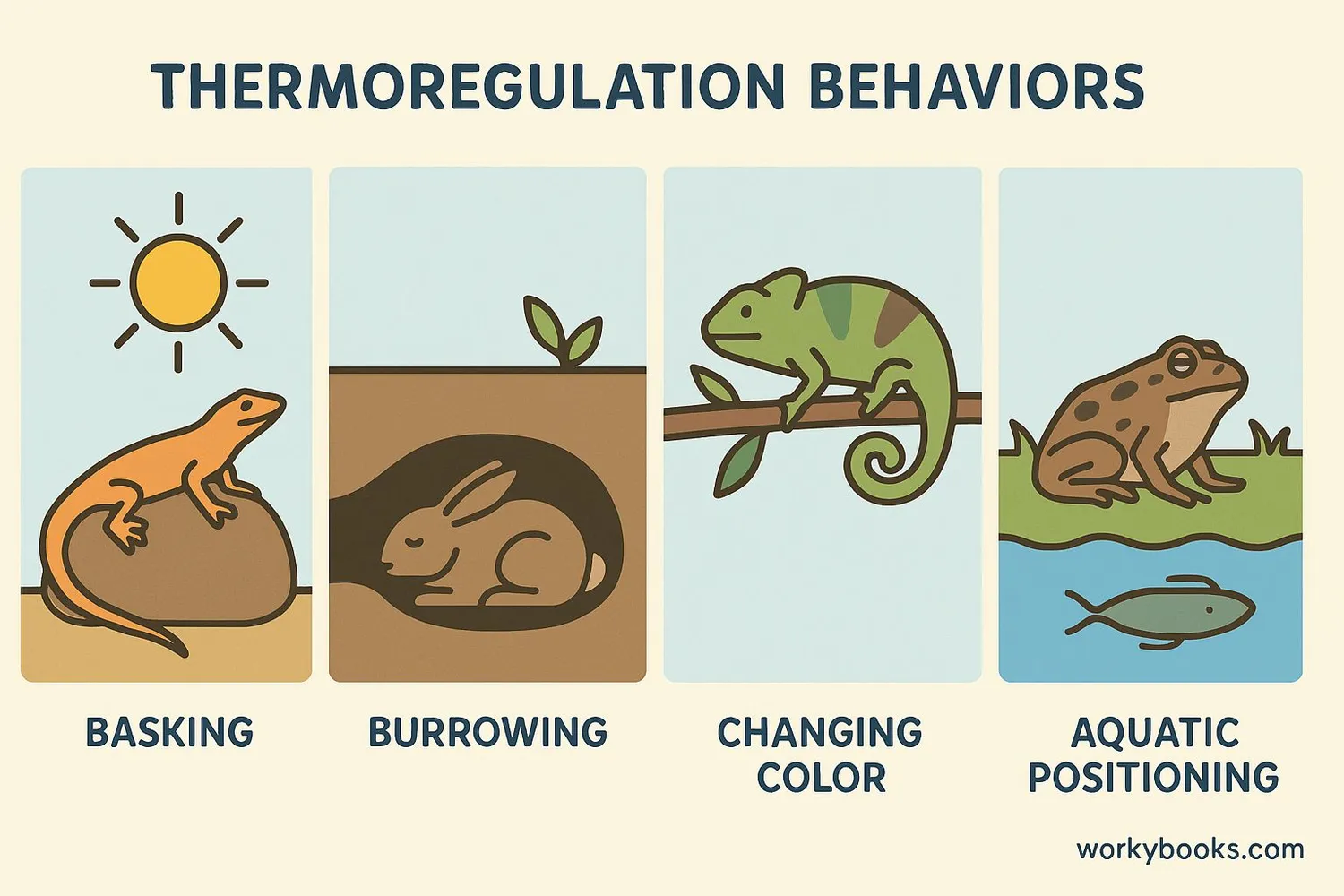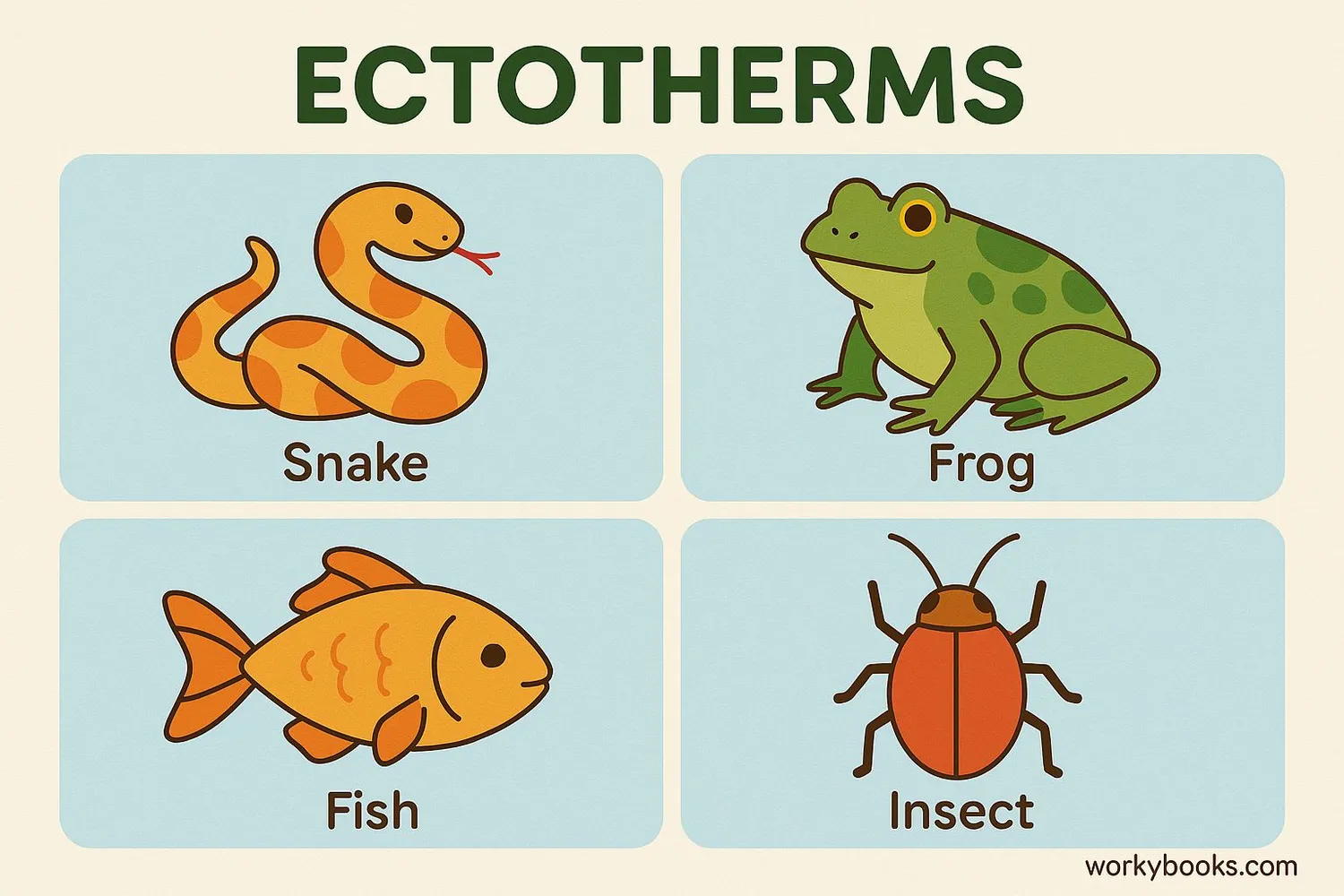Ectotherms - Definition, Examples, Quiz, FAQ, Trivia
Discover how reptiles, amphibians, fish and insects use their environment to regulate body temperature
What is an Ectotherm?

Ectotherms are animals that rely on external sources to regulate their body temperature. They are often called "cold-blooded" animals, but this doesn't mean their blood is actually cold! Instead, their body temperature changes with their environment.
Unlike mammals and birds that generate their own body heat, ectotherms depend on:
• Sunlight to warm up
• Shade or water to cool down
• Different surfaces (rocks, sand, water) to adjust their temperature
The scientific term "ectotherm" comes from Greek words meaning "outside heat" - perfect for describing these amazing animals!
Science Fact!
Ectotherms make up about 99% of all animal species on Earth! This includes all fish, amphibians, reptiles, and invertebrates.
Temperature Regulation

Ectotherms use amazing strategies to maintain the right body temperature. Since they can't generate internal heat like mammals do, they've developed smart behaviors to manage their temperature:
Basking
Lying in sunlight to absorb warmth
Shade Seeking
Moving to cooler areas when too hot
Burrowing
Digging underground to find stable temperatures
Aquatic Positioning
Swimming to different water depths
Color Changing
Adjusting skin color to absorb more or less heat
These behaviors are called thermoregulation - the process of maintaining a stable internal temperature. Ectotherms are masters at this! For example, a desert lizard might start its day basking on a warm rock, then move to shade when the midday sun becomes too hot.
Temperature Fact!
Some desert lizards can change their body temperature by 40°F (22°C) in just a few minutes by moving between sun and shade!
Examples of Ectotherms

Ectotherms are found in nearly every environment on Earth! Here are some common types of ectothermic animals:
Reptiles
Snakes, lizards, turtles, crocodiles
Reptiles bask in the sun to warm up and seek shade or water to cool down.
Amphibians
Frogs, toads, salamanders
Amphibians use water and moist environments to regulate their temperature.
Fish
All fish species
Fish move to different water depths to find their preferred temperature.
Invertebrates
Insects, spiders, crustaceans
These small ectotherms use microhabitats to find the right temperature.
These diverse animals all share the same basic need: they must use their environment to maintain the right body temperature for survival. Without the ability to do this, they couldn't hunt, escape predators, or digest their food properly!
Amazing Adaptations

Ectotherms have developed incredible adaptations to survive in different environments:
Color Change
Some lizards change color to absorb more or less heat
Antifreeze Proteins
Arctic fish produce special proteins to prevent freezing
Burrowing
Desert animals dig burrows to escape extreme heat
Other fascinating adaptations include:
• Some desert lizards do a special "dance" where they lift alternating feet to avoid burning on hot sand
• Frogs can absorb water directly through their skin in dry environments
• Certain fish can survive in near-boiling hot springs
These adaptations show how ectotherms have evolved to thrive in almost every environment on Earth!
Ectotherm Knowledge Quiz
Test what you've learned about ectotherms with this quiz! Answer all 5 questions to see how much you know.
Frequently Asked Questions
Here are answers to common questions about ectotherms:
Amazing Ectotherm Trivia
Discover some incredible facts about cold-blooded creatures!
Size Advantage
Ectotherms can grow much larger than warm-blooded animals! The blue whale is huge, but the largest animals that ever lived were prehistoric ectotherms like Argentinosaurus, which was 115 feet long and weighed 100 tons!
Energy Efficiency
Ectotherms need only 10% of the food that similarly sized mammals require! A snake might eat just once a month, while a similar-sized mammal needs to eat every day. This makes them extremely energy-efficient.
Long Lifespans
Some ectotherms live incredibly long lives! Tuatara reptiles can live over 100 years, and certain tortoises have lived more than 150 years. Their slow metabolism contributes to their longevity.
Dinosaur Connection
Scientists believe many dinosaurs were ectotherms! Their huge size made it difficult to maintain a constant warm body temperature. Fossil evidence shows they likely used the sun to warm up, just like modern reptiles.


